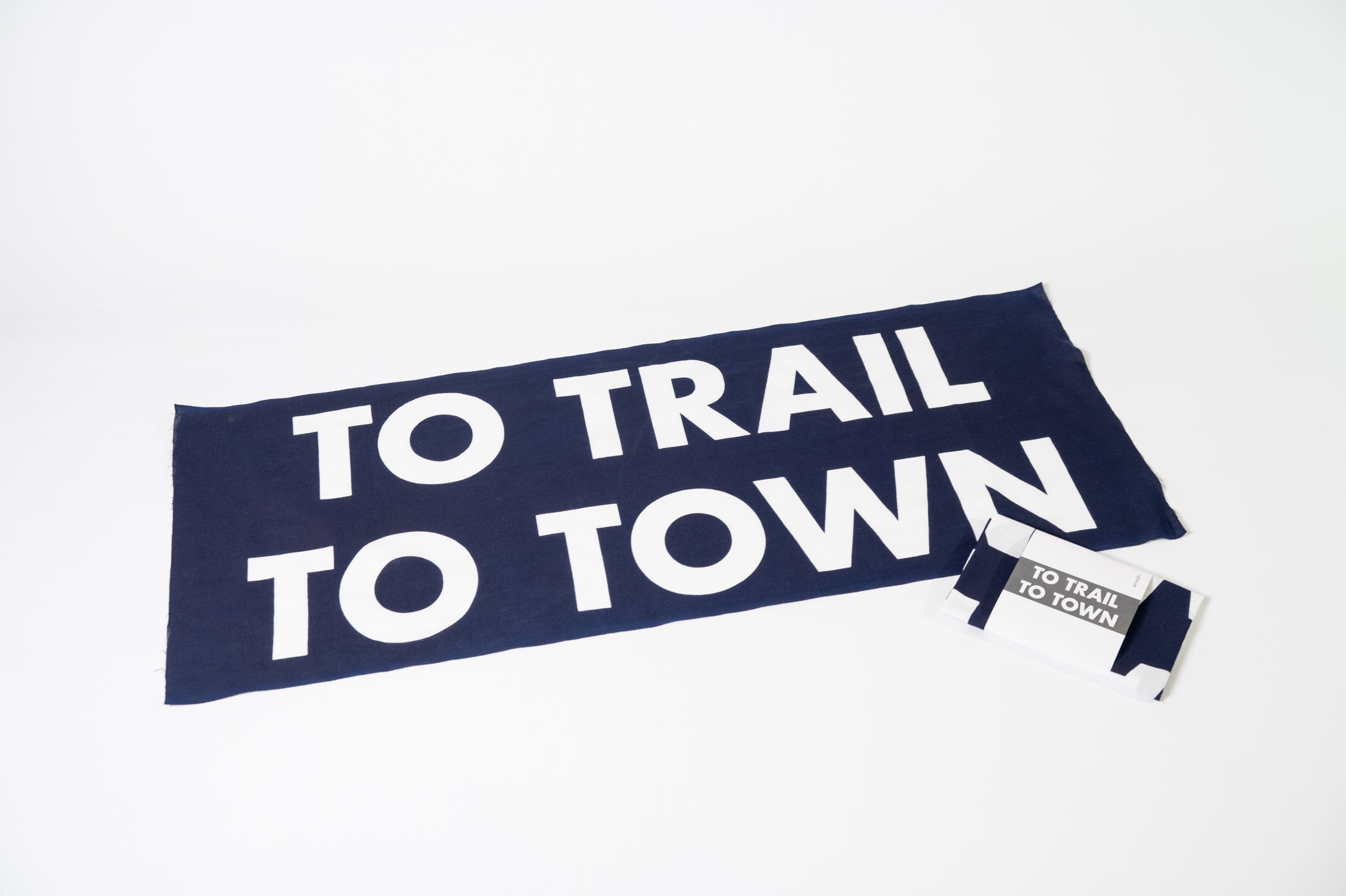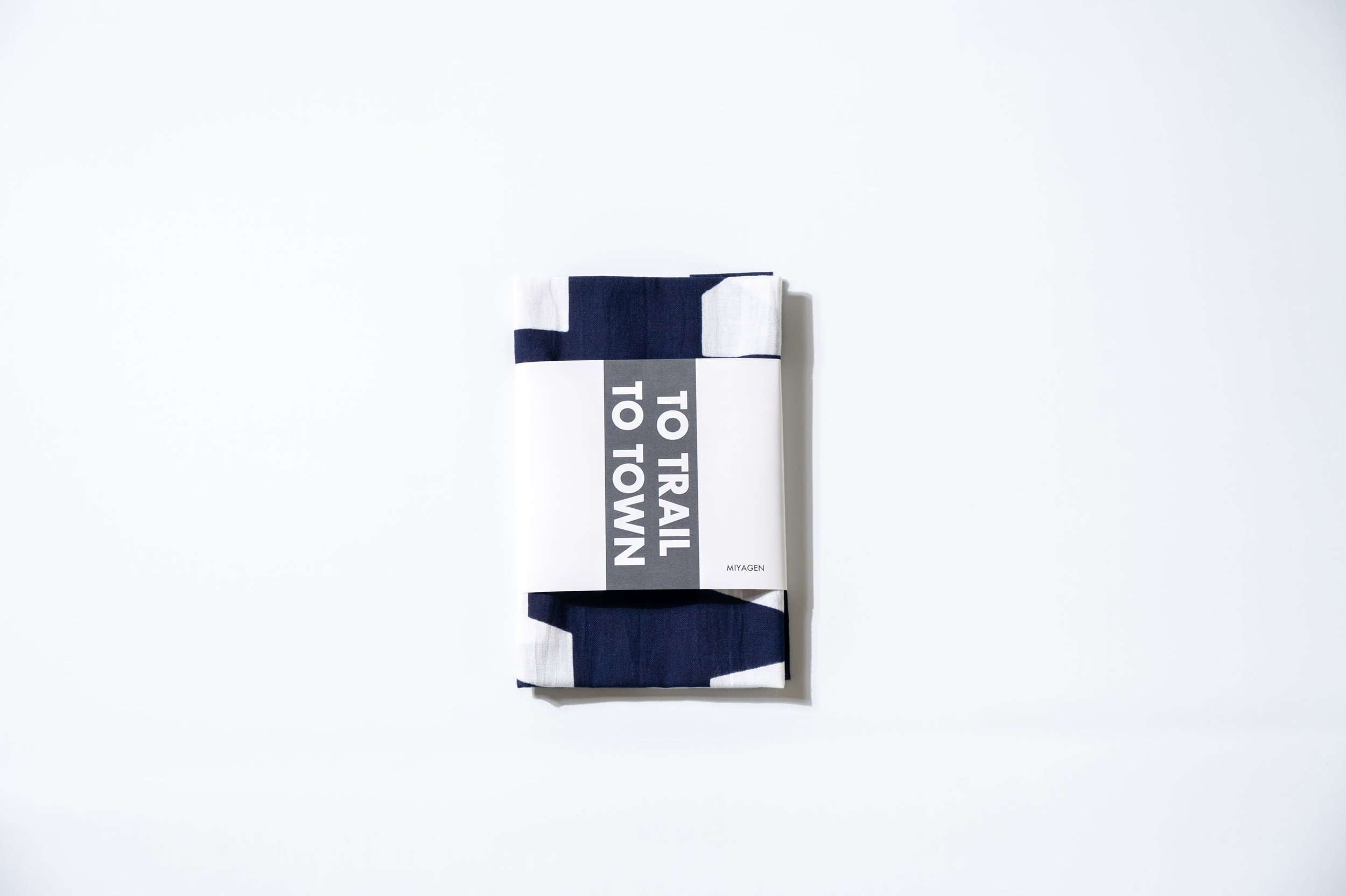 Image 1 of 9
Image 1 of 9

 Image 2 of 9
Image 2 of 9

 Image 3 of 9
Image 3 of 9

 Image 4 of 9
Image 4 of 9

 Image 5 of 9
Image 5 of 9

 Image 6 of 9
Image 6 of 9

 Image 7 of 9
Image 7 of 9

 Image 8 of 9
Image 8 of 9

 Image 9 of 9
Image 9 of 9










MIYAGEN Trail Engineering Tenugui TO TRAIL TO TOWN
■Spec
Weight: 35g
Material: 100% cotton
Color: Indigo
■ Development notes
From April 2022, I will go on a 4200km long trail trip in the United States called PCT.
One of the items I wanted for trail equipment was a tool that would be useful for hitchhiking
I have traveled in Japan by hitchhiking, and I have tried and errored the difficulty of hitchhiking and the ingenuity to stand out.
I will have an unknown experience to do it in the American wilderness.
Travelers often put up a message sign on a cardboard box in an attempt to be noticed by drivers, but when I thought about a smarter solution that would not produce garbage and could be used, there was a "tenugui".
Hamamatsu City, Shizuoka Prefecture, where I spent my university life, is known for its traditional textile crafts, and Enshu is known as one of the three major cotton textile production areas in Japan.
When I called out to a dyeing shop near my university, I was able to make hand towels using the traditional Hamamatsu chusen technique.
■ Tenugui material and dyeing process
It will be a hand towel using domestic fabric woven in Osaka.
Among them, we use the finest fabric called Tokuoka, which is soft and smooth with fine threads, and has a good texture on the skin.
In Hamamatsu Chusen, each piece is made by hand, including pattern paper, gluing (applying glue to areas that are not to be dyed), dyeing, washing, and drying.
It requires skill and experience because it only comes into contact with water and oxygen. This chusen is a technique that can be achieved by craftsmanship, and it is the only dyeing technique in Japan in the world. For this reason, chusen is designated as a national traditional craft.
◾︎ About the design
The design of the tenugui was designed for walking on the long-distance mountain trail called the Pacific Crest Trail in the United States. Long trails always require hitchhiking to replenish fuel and food.
For hitchhiking on a mountain pass, I made it to show up to passing drivers, saying "TO TRAIL TO TOWN".
Yogi's existence is the origin of the design. Yogi is a long trail hiker, author and creator of long trail guidebooks.
Yogi's bandana had a hitchhiking message and a PCT map, and it was useful with a lot of information. However, if I wanted to express it in a simpler Japanese way, I would like to do this, and tried to apply it to the Japanese traditional culture of "tenugui".
As a characteristic of Chusen, the letters are dyed to the core of the thread, so the characters do not fade.
In order to improve visibility on the road, the color scheme is white on a blue background using the Purkinje phenomenon.
Sulfur dyes will fade with wear and UV rays, just like denim, but the readability of white text will remain virtually unchanged. Rather, it may be a shade like a blue signboard in Japan.
We want you to enjoy fading by absorbing a lot of sweat and UV rays.
Japanese tenugui can be very compact, but it absorbs a lot of water and dries quickly because the edges are not sewn. It's easy to change its shape, so you can wrap it around your head, use it as a neck gaiter, wipe off condensation from your tent, or take it to a hot spring. You can use it freely.
This product has a very simple design, but has the above background. A piece of cloth is dyed with skillful techniques. Please enjoy this deep color and fluctuation. The more you use it, the more supple it becomes and it will become familiar with your skin.
■Japanese traditional craft dyeing
・Japanese towel
・Chusen is dyed to the core of the thread and the letters never disappear.
・White text on a blue background is called the Purkinje phenomenon, and has good visibility like a blue signboard.
・When the indigo color fades, the contrast decreases, but as it becomes bluer, the Purkinje phenomenon is enhanced.
・Because the edges are not sewn, it is light and dries quickly.
■Instructions about the product
Since the edges of the Japanese tenugui are left uncut, they will fray at the beginning of use. The fraying will stop as you wash it. Cut off any frayed threads, leaving about 2-3 cm.
By leaving it uncut, you can maintain quick-drying performance and prevent the growth of bacteria. It can be cut and used in an emergency such as an injury.
■ Precautions for use
As this product is dyed by hand, color fading may occur. Please be sure to wash your hands before use. Please wash separately from other items when washing. If you wear it while wet, there is a possibility of dye transfer, so please wash it several times before wearing it around your neck. Since the fabric is thin, we recommend using a laundry net in the washing machine.
Photos and text: MIYAGEN Trail Engineering
■Spec
Weight: 35g
Material: 100% cotton
Color: Indigo
■ Development notes
From April 2022, I will go on a 4200km long trail trip in the United States called PCT.
One of the items I wanted for trail equipment was a tool that would be useful for hitchhiking
I have traveled in Japan by hitchhiking, and I have tried and errored the difficulty of hitchhiking and the ingenuity to stand out.
I will have an unknown experience to do it in the American wilderness.
Travelers often put up a message sign on a cardboard box in an attempt to be noticed by drivers, but when I thought about a smarter solution that would not produce garbage and could be used, there was a "tenugui".
Hamamatsu City, Shizuoka Prefecture, where I spent my university life, is known for its traditional textile crafts, and Enshu is known as one of the three major cotton textile production areas in Japan.
When I called out to a dyeing shop near my university, I was able to make hand towels using the traditional Hamamatsu chusen technique.
■ Tenugui material and dyeing process
It will be a hand towel using domestic fabric woven in Osaka.
Among them, we use the finest fabric called Tokuoka, which is soft and smooth with fine threads, and has a good texture on the skin.
In Hamamatsu Chusen, each piece is made by hand, including pattern paper, gluing (applying glue to areas that are not to be dyed), dyeing, washing, and drying.
It requires skill and experience because it only comes into contact with water and oxygen. This chusen is a technique that can be achieved by craftsmanship, and it is the only dyeing technique in Japan in the world. For this reason, chusen is designated as a national traditional craft.
◾︎ About the design
The design of the tenugui was designed for walking on the long-distance mountain trail called the Pacific Crest Trail in the United States. Long trails always require hitchhiking to replenish fuel and food.
For hitchhiking on a mountain pass, I made it to show up to passing drivers, saying "TO TRAIL TO TOWN".
Yogi's existence is the origin of the design. Yogi is a long trail hiker, author and creator of long trail guidebooks.
Yogi's bandana had a hitchhiking message and a PCT map, and it was useful with a lot of information. However, if I wanted to express it in a simpler Japanese way, I would like to do this, and tried to apply it to the Japanese traditional culture of "tenugui".
As a characteristic of Chusen, the letters are dyed to the core of the thread, so the characters do not fade.
In order to improve visibility on the road, the color scheme is white on a blue background using the Purkinje phenomenon.
Sulfur dyes will fade with wear and UV rays, just like denim, but the readability of white text will remain virtually unchanged. Rather, it may be a shade like a blue signboard in Japan.
We want you to enjoy fading by absorbing a lot of sweat and UV rays.
Japanese tenugui can be very compact, but it absorbs a lot of water and dries quickly because the edges are not sewn. It's easy to change its shape, so you can wrap it around your head, use it as a neck gaiter, wipe off condensation from your tent, or take it to a hot spring. You can use it freely.
This product has a very simple design, but has the above background. A piece of cloth is dyed with skillful techniques. Please enjoy this deep color and fluctuation. The more you use it, the more supple it becomes and it will become familiar with your skin.
■Japanese traditional craft dyeing
・Japanese towel
・Chusen is dyed to the core of the thread and the letters never disappear.
・White text on a blue background is called the Purkinje phenomenon, and has good visibility like a blue signboard.
・When the indigo color fades, the contrast decreases, but as it becomes bluer, the Purkinje phenomenon is enhanced.
・Because the edges are not sewn, it is light and dries quickly.
■Instructions about the product
Since the edges of the Japanese tenugui are left uncut, they will fray at the beginning of use. The fraying will stop as you wash it. Cut off any frayed threads, leaving about 2-3 cm.
By leaving it uncut, you can maintain quick-drying performance and prevent the growth of bacteria. It can be cut and used in an emergency such as an injury.
■ Precautions for use
As this product is dyed by hand, color fading may occur. Please be sure to wash your hands before use. Please wash separately from other items when washing. If you wear it while wet, there is a possibility of dye transfer, so please wash it several times before wearing it around your neck. Since the fabric is thin, we recommend using a laundry net in the washing machine.
Photos and text: MIYAGEN Trail Engineering
